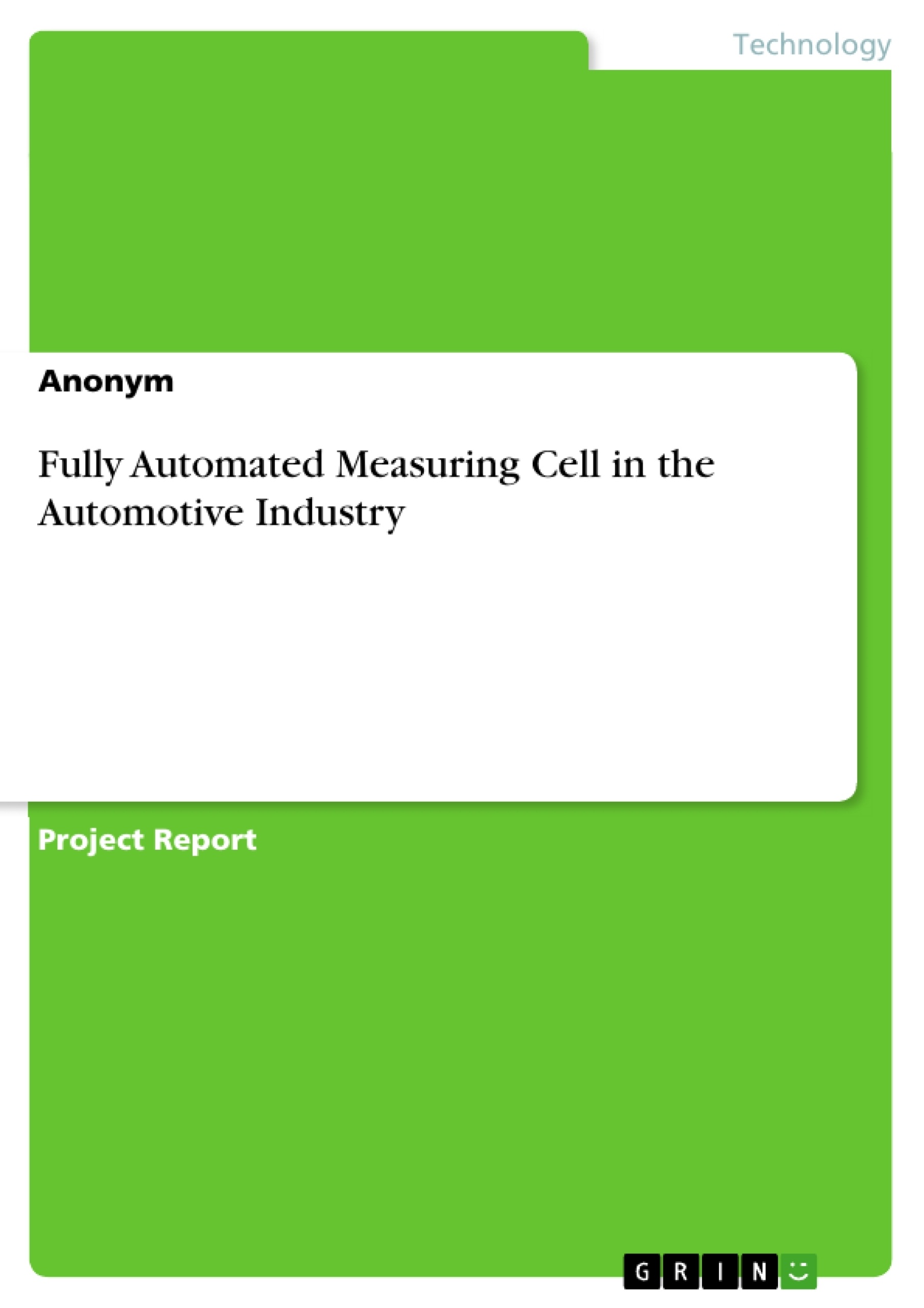The main objective of the project work is to identify problems, which are related to computer-aided manufacturing and to show new perspectives to solve them. Especially in the automotive industry, the automation of processes is playing an increasingly significant role. New process’s like fully automated measuring cells enable the companies to achieve their goals efficiently. So, in this composition, the most common measurement principles, tactile and optical, will be explained. Moreover, the advantages and disadvantages of each system will be described. This report ends up with a conclusion and the central result is, that fully automated optical measurement cells are highly competitive to other measurement technologies, but still needs a lot of development and time.
The worldwide automotive industry is highly competitive. Customers have a stronger emphasis on product quality and pricing. For aesthetic and functional reasons, narrow, exactly parallel gaps on the doors, bonnet, and tailgate are now regarded as the obvious quality features of modern vehicles. To fulfill the customer and market requirements the investment in fully automated measuring technologies are continuing to rise.
Inhaltsverzeichnis (Table of Contents)
- Abstract
- Introduction
- Control systems
- Tactile control system
- Optical control system
- Fully automated optical measuring cell
- Function of the measuring cell
- Future development
- Evaluation and Conclusion
- References
Zielsetzung und Themenschwerpunkte (Objectives and Key Themes)
This project aims to identify challenges in computer-aided manufacturing and propose innovative solutions. Specifically, the focus is on the automation of processes in the automotive industry, particularly the implementation of fully automated measuring cells. The report explores the principles of tactile and optical measurement techniques, highlighting their advantages and disadvantages. The ultimate goal is to assess the feasibility and competitiveness of fully automated optical measuring cells within the automotive industry.
- Automation in the automotive industry
- Tactile and optical measurement techniques
- Advantages and disadvantages of measurement systems
- Fully automated optical measuring cells
- Future development and competitiveness of optical measurement
Zusammenfassung der Kapitel (Chapter Summaries)
- Abstract: This section provides a concise overview of the project's objective, focusing on automated processes in the automotive industry and the comparison of tactile and optical measurement techniques.
- Introduction: The introduction highlights the highly competitive nature of the automotive industry and the increasing emphasis on product quality and pricing. It emphasizes the importance of automated measuring technologies for meeting customer and market demands.
- Control Systems: This chapter introduces the two fundamental types of inspection techniques: tactile control systems, which utilize mechanical probes, and optical control systems, which utilize non-contact sensors. It provides detailed explanations of both systems, outlining their respective principles of operation and applications.
- Tactile Control System: This section delves into the specifics of tactile control systems, explaining the mechanism of stylus-based measurement. It illustrates how the sensor interacts with the workpiece to determine surface characteristics and provides examples of how the system functions in practice.
- Optical Control System: This section focuses on optical control systems, explaining their basic principles and technology. It explores various lighting schemes employed in optical measurement and how they are used to illuminate the workpiece for accurate measurement.
Schlüsselwörter (Keywords)
The project centers on the automation of manufacturing processes in the automotive industry, with a particular focus on computer-aided manufacturing (CAM). The core concepts explored include tactile and optical measurement techniques, their comparative advantages and disadvantages, and the potential of fully automated optical measuring cells. The project investigates the implementation of these technologies in real-world applications, considering factors like cost-effectiveness, accuracy, and future development.
- Citar trabajo
- Anonym (Autor), 2017, Fully Automated Measuring Cell in the Automotive Industry, Múnich, GRIN Verlag, https://www.grin.com/document/438286



